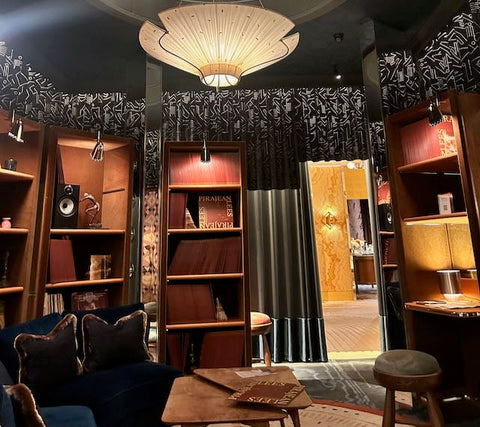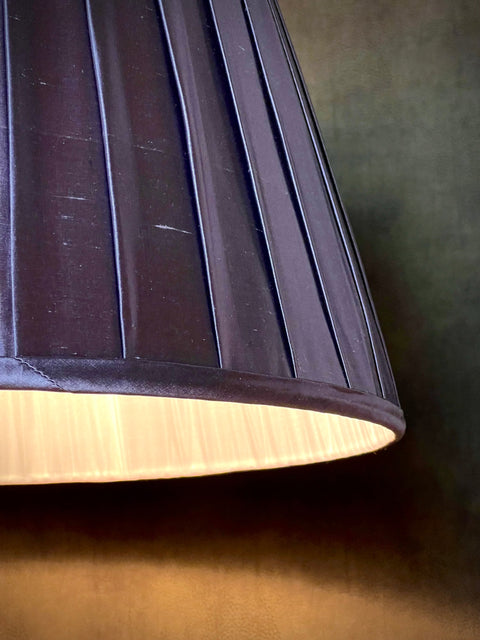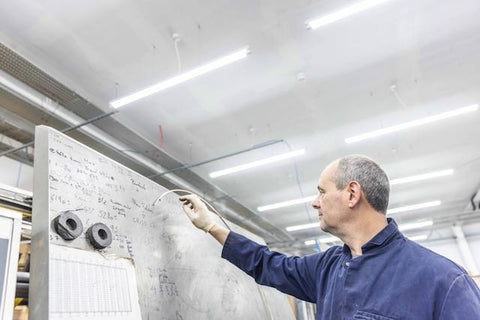Beyond the Trend: Why the Most Successful Interiors Commission, Not Just Source
By Tom Acciarini, Iberian Lighting
The interiors sector is no stranger to commercial pressure. Designers must work at pace and deliver beauty, function and cohesion, often within tight budgets, tighter timelines, and client expectations shaped by global supply chains and fast-moving trend cycles. (See: The Rattan Moment)
In the push for convenience, something valuable is often lost: the provenance of the objects we specify, and the stories they could tell.
Commissioning as an Opportunity
A shift in mindset is underway. Increasingly, sourcing is being viewed not as a passive exercise in selection, but as a creative opportunity to commission. This approach accepts market realities and uses manufacturing constraints as a space for innovation and collaboration.

Related: Why Collaboration with Makers Leads to Better Design
Fast Interiors, Slow Consequences
Much like fast fashion, fast interiors are marked by uniformity, impermanence, and overlooked costs. Imported fittings and off-the-shelf furnishings may reduce initial expenditure, but their social and environmental impact, from exploitative labour to unsustainable production, is significant. Many fashionable interiors date quickly and are replaced before reaching the end of their functional life.
Related: Sustainable Design Is Not Optional
While designers may not always control final purchasing decisions, they do shape the culture around them. By introducing commissioning early in the concept phase, they can challenge conventional thinking about value and elevate the project’s potential.
Commissioning as Creative Leadership
Commissioning is not a luxury reserved for large budgets. It is a mindset that treats makers as collaborators. Whether developing a hand-thrown ceramic table lamp or a custom-woven textile, the outcome is an object rooted in intention, context and meaning.

This approach also serves a broader cultural purpose. According to the Heritage Crafts Association’s Red List of Endangered Crafts, over 130 traditional skills in the UK, from rush weaving to stained glass making, are now at risk. Though historically linked to heritage or religious buildings, many of these crafts remain highly relevant to contemporary interiors. What they need is visibility and demand.
Interior designers are well-placed to provide both.
Quiet Confidence in Process
At WOW!House 2025, hosted at Design Centre Chelsea Harbour, bespoke pieces stood out across the rooms curated by leading interior designers. These items were not always the loudest, but they carried the strongest narratives. They signalled creative confidence rooted in process.
In lighting, that might mean a bespoke armature that echoes a line in the architecture. A shade that responds to a material palette. A texture that comes to life under light.
See: How Lighting Details Define a Space
These choices shape not only the space, but also how people feel in it.
At Iberian Lighting, we make exclusively to order. This allows us to work closely with specifiers to develop lighting that responds to the specific needs of a project. (Explore: Recent Commissions) The process begins with practical discussions — consultations, drawings, finishes — but often moves into questions of provenance, meaning and intent.
The further those conversations go, the more one quality emerges in those who lead them well: curiosity. Not just fluency in design, but a willingness to explore what else is possible.
Supporting Craft Through Commission
Many of the makers we work with are specialists. Their methods are slow, deliberate and rooted in tradition. Some of these skills are at risk of being lost. Without projects that make space for this kind of work, it will not continue.

This is not nostalgia. It is a responsibility. Commissioning helps preserve techniques, materials and sensibilities by placing them into new contexts where they remain relevant.










Comments (0)
There are no comments for this article. Be the first one to leave a message!